
Director's Report
Dear fellow conservationists,
Welcome to what feels like summer! The ever-unpredictable weather seems to be mimicking the year we all put behind us and—even now—the changes that continue to take place.
We send our heartfelt congratulations to Karen Marshall, the Chester County Planning Commission’s Heritage Preservation Coordinator, who recently retired after nine years with the Planning Commission and 14 years with the County. Karen played a key role in so many of the County’s achievements in historic preservation and was crucial as a partner to the Brandywine Conservancy in our work at Birmingham Hill and so many other projects that highlighted the County’s bountiful history.
As always, in this edition of Environmental Currents we feature the Conservancy’s work to preserve and restore the natural resources that surround and sustain us, from adding key acreage to the Laurels Preserve, and expanding the protection of the nearby lands and waters as part of the Preserve, to learning more about invasive plants and helpful mussels.
But in this Director’s Report, I’m going to highlight another resource—the one behind the scenes, the one that labors to protect, conserve, and restore our region using creativity, partnership, perseverance, gumption and devotion. That resource is the staff at the Brandywine Conservancy—current and past—as well as those yet to join us.
In this issue in particular, I get to highlight one of our staff who will be retiring at the end of this month, after 38 years of service to the preservation, protection and restoration of this region’s land, prime agricultural soil, water—and beauty. That staff member is David Shields.
I’ll let the words and well wishes of so many who know and worked with David for many years speak for themselves, as you will read in this newsletter. But, on behalf of myself and all the staff at the Brandywine Conservancy, we wish you and your family well, David. We wish you happiness and we thank you for a legacy of conservation that will transcend generations.
Sincerely,
Ellen
Ellen M. Ferretti
Director, Brandywine Conservancy
Expanding a Beloved Preserve
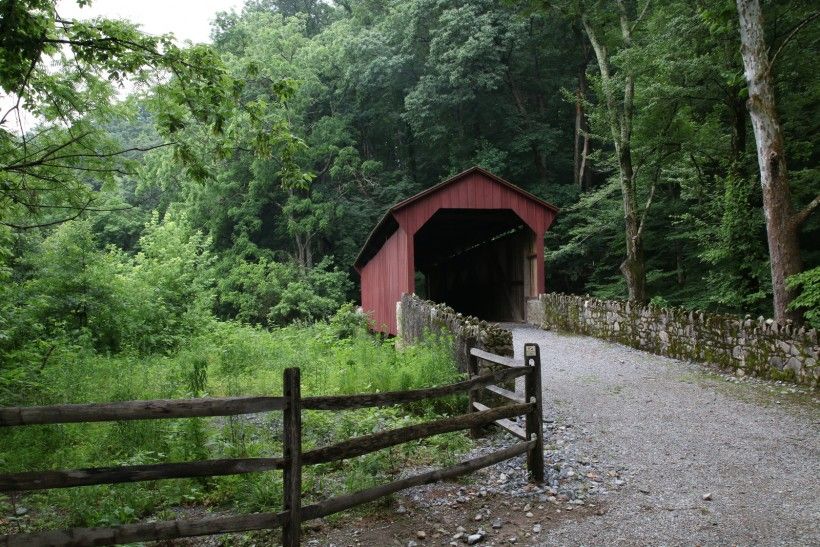
In late 2020, the Conservancy was presented with the once-in-a-lifetime opportunity to expand the Laurels Preserve for the first time since its founding in the 1980s.
The Conservancy launched a successful $2.6 million fundraising effort to purchase more than 80 acres, which were originally part of the late Ralph and Suzanne Roberts’ farm. The campaign was fueled by an initial $1 million challenge from Brandywine Trustee Herb Kohler and has sustained momentum thanks to the generous support of many on the Brandywine’s Board of Trustees, the Buck & Doe Trust, the Cheshire Hunt, and members.
The transaction is slated to be completed by fall 2021. This critically important and stunningly beautiful landscape will be incorporated into the broader Laurels Preserve, eliminating the threat of further subdivision or new development in critical viewsheds and ensuring access to trails that have long been enjoyed by the neighbors and Brandywine members. Once finalized, the acquisition will also add an additional 10% of protected land to the Laurels.
This acquisition is emblematic of the organization’s mission—to protect and conserve the land, water, natural and cultural resources of the Brandywine-Christina watershed. Rarely does an opportunity arise to acquire a property that contains all manner of resources, let alone one that is adjacent to one of the Conservancy’s most beloved Preserves.
A Lasting Legacy: Celebrating the Brandywine’s David Shields
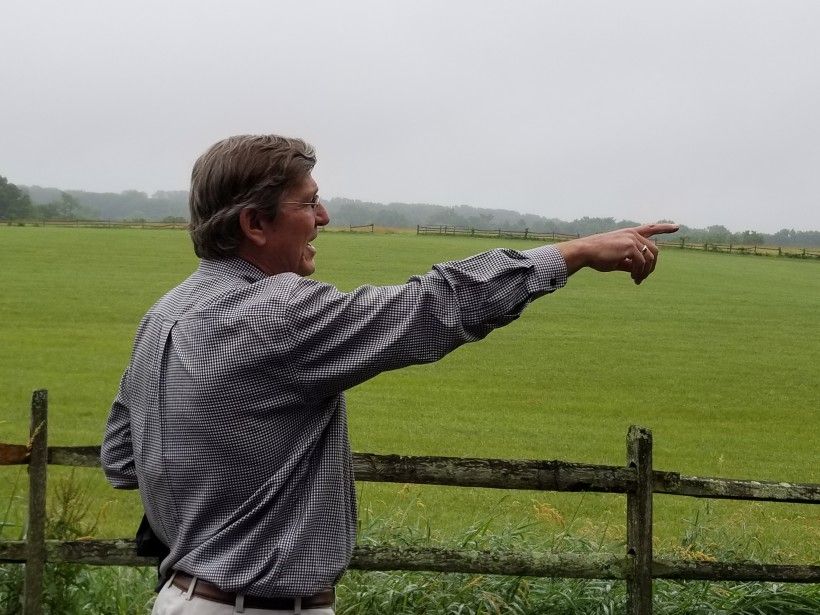
After a long and esteemed career at the Brandywine Conservancy, Associate Director David Shields will be retiring at the end of June 2021. While we all wish David a happy and much-deserved retirement, we also want to reflect on the incredible legacy he leaves behind.
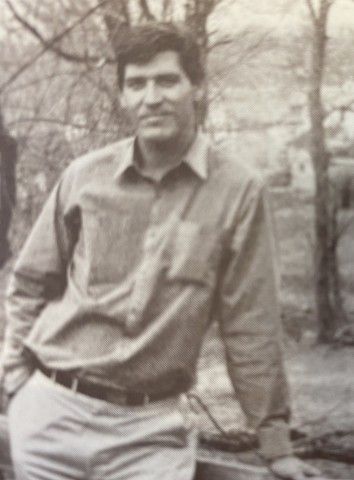
David began at the Brandywine as an unpaid intern in the summer of 1980, then transitioned to a part-time employee a few years later in February 1983—only to become a full-time staff member later that year. With the advent of the landmark conservation deal to preserve the lands and waters of the King Ranch—as crafted by the Brandywine’s co-founder George A. “Frolic” Weymouth—David worked full time as the Partnership Administrator at Buck and Doe Associates L.P. in March 1984 through March 1988, before returning to the Brandywine as a full-time employee again in April 1988. Under a special arrangement with the Brandywine, he continued to work on the closing out of the Partnership until 1992.
"When we were both young men, I had the pleasure of working together with Dave to obtain the subdivision approvals from the three townships where the King Ranch was located,” said Ross A. Unruh, Esquire, of Unruh Turner Burke & Frees. “Due to Dave's preparation and engaging personality, the approval process was a breeze."

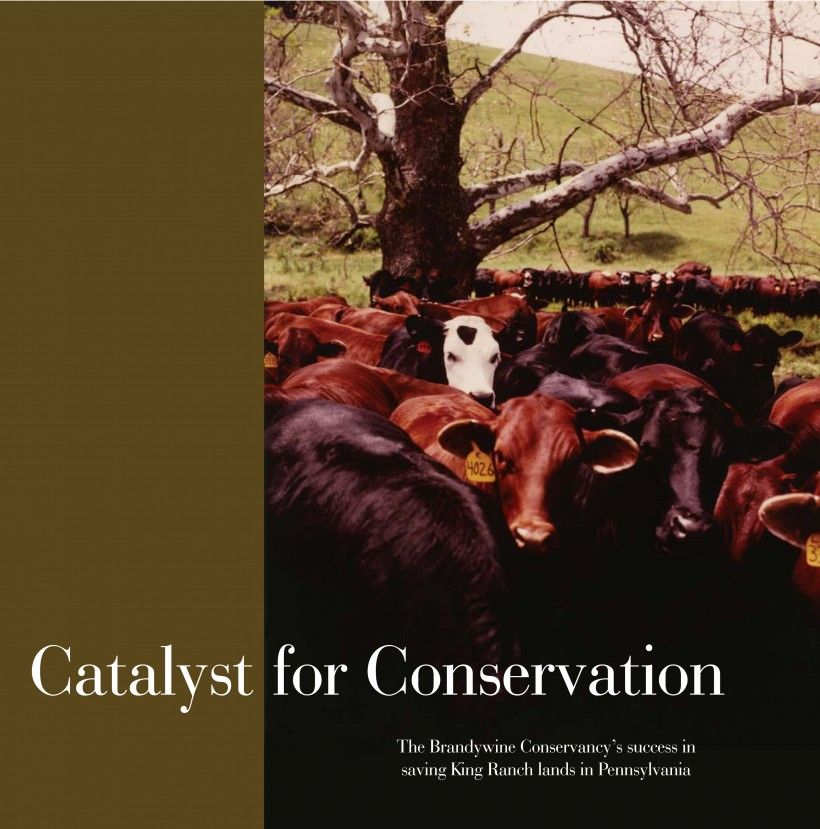
“David was instrumental to the success of the King Ranch conservation project,” noted Dorothy Matz, Brandywine trustee. “He recognized the magnitude and importance of this conservation effort that was really unprecedented at the time, and he dove right in. His attention to detail, fastidious research, and continuous focus on the mission was key to preserving such a big piece of Chester County at the time. As it turns out, that was just a starting point for David and the continual preservation efforts of the Conservancy.”
The year David started as a full-time employee, Brandywine Conservancy’s Land and Easement protection statistics were as follows:
Owned: 375 acres
Eased: 3,755 acres
Facilitated: 1,035 acres
Total: 5,165 acres
That is a far cry from where we are now:
Owned: 2,870 acres
Eased: 37,990 acres
Facilitated: 27,267 acres
Total: 68,127 acres
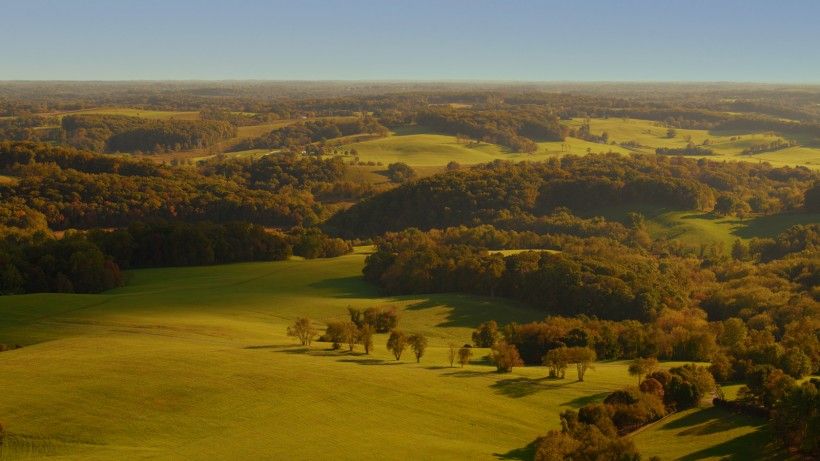
David was there through it all, beginning with the heightened expansion of the Conservancy’s race against time and development pressure to protect the lands and waters of the Brandywine Valley, not least of which resulted in the preservation of the King Ranch and our beloved Laurels Preserve.
"David first worked with my father drafting a conservation easement for our family farm, and after my father passed away, he has been working with my siblings and me to update it,” said Morris W. Stroud II, Chairman of the Brandywine’s Board of Trustees. “From the start, he has been extremely knowledgeable and professional. He has been a terrific partner throughout the process."
William J. Burke, III, from Unruh Turner Burke & Frees, added: “It has been my pleasure and privilege to work with David on many matters for the Brandywine over the course of many, many years. He has an encyclopedic knowledge of conservation issues, and of course an unmatched institutional knowledge of Brandywine projects. Always a dedicated workhorse, he seems to enjoy the challenge of the more difficult and complex projects. He pays attention to the details. Smart, diligent and a great pleasure to work with.”
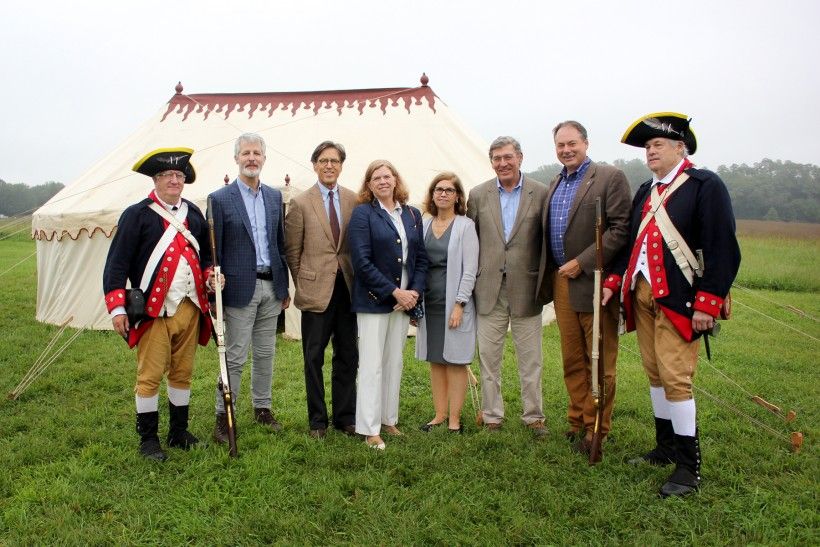
David’s career accomplishments also span thousands of acres of protected battle lands from the American Revolutionary War. “His knowledge of the Battle of Brandywine—and willingness to share it with others—and concurrent 20-year efforts to preserve the acres on and around Birmingham Hill—will forever allow these lands, truly hallowed ground, to memorialize the historic events that occurred there in our Nation’s past,” said Ellen Ferretti, Director of the Brandywine Conservancy. “His work will live on in these protected lands and in so much of the beauty and character of the lands in the three adjoining counties (Chester, Delaware and New Castle) that the then ‘Tri-County Conservancy’ was formed to protect.”
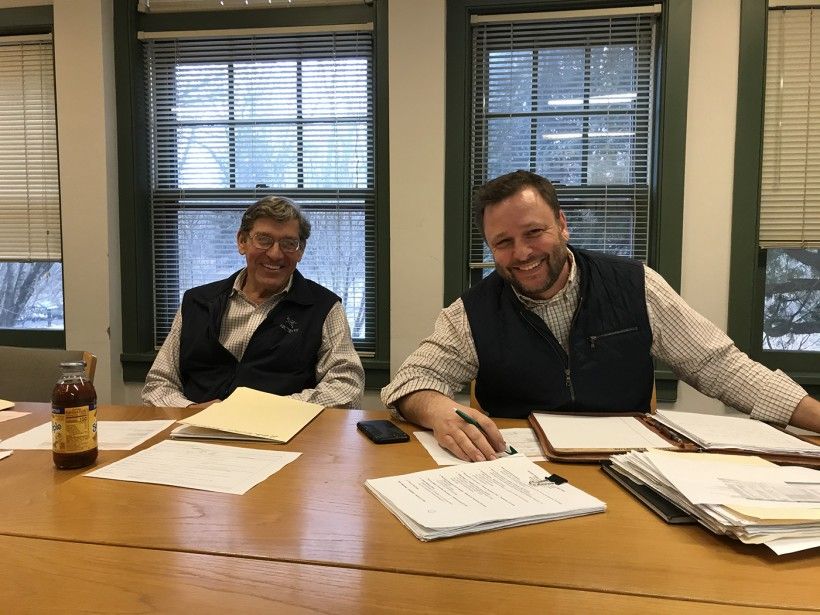
Those of us who have had opportunity to work with David know he is a fountain of knowledge and expertise, and he has shared that with us for the good of the mission of the Conservancy and conservation overall. "David’s knowledge is matched by his determination and enthusiasm for the critically important work that has defined his career," said Virginia A. Logan, The Frolic Weymouth Executive Director & CEO of the Brandywine. "He is among few whose professional legacy is documented by the extraordinary beauty of the lands that are permanently protected, the vibrancy of plain sect farms around the headwaters of the Brandywine and the historic resources that have been preserved for generations to come. David has been instrumental to our success and deserves much gratitude for all he has accomplished in his career. We will miss him and wish him a long, healthy, and happy retirement."
Not to be forgotten as well, his respect as a professional in this field is nationally recognized. “Over the course of his career, David has built and leveraged extensive expertise in the field of land conservation to help protect thousands of acres of open space,” commented Ann C. Rose, President of the Board of Mt. Cuba Center. “His work has had a substantial impact on our region, preserving natural areas and historic sites for generations to come. Mt. Cuba Center is proud to count David among its Board of Managers and celebrates his contributions to conservation.”
Brandywine trustee Jack Hines added, “David has been an important part of Brandywine Conservancy because of his dedication to the conservation of our land, his huge part in preserving King Ranch and the Brandywine Battlefield area. His many years of service have created a continuity in our program that is invaluable, as has been his work with other conservation organizations and conservation professionals. We wish David a wonderful retirement to enjoy the beauty of the area he was so much a part of protecting.”
"It’s well deserved but hard to believe David is retiring," said Andy Loza, Executive Director of We Conserve PA. "I thought that as he aided Brandywine in increasing its conserved lands ten-fold, he could push through a few more decades to make it a hundred-fold. Beyond his great conservation successes, I’ll always fondly remember listening to his words of wisdom over drinks when I was starting out in my career."
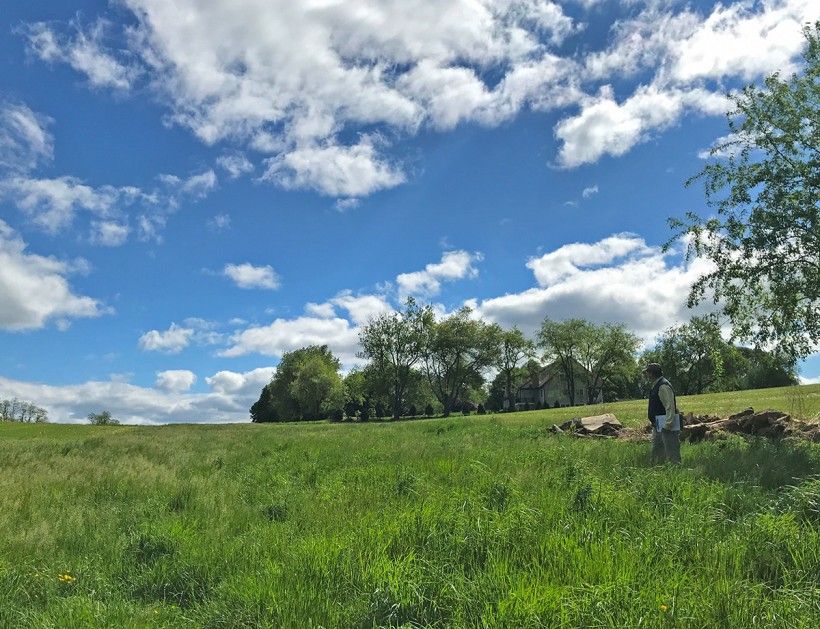
Most recently, David was critical in securing funding for and executing, on multiple leadership levels, the multi-million-dollar, multi-state Delaware River Watershed Initiative—a program of the William Penn Foundation—as well as several National Fish and Wildlife Foundation grants for work within the watershed. His leadership in current activities and planning for the future of the work has been incalculable.
David leaves behind a legacy of protected forests, fields and streams; rolling scenic landscapes; world-class prime agricultural soils; and beauty as part of his long career with the Brandywine Conservancy. A legacy that will last—forever—across generations. He will be missed by current and past staff and partners of the Brandywine Conservancy, but as evidenced here, his work will continue to live on.
Responsible Stewardship: From Our Backyard to Yours
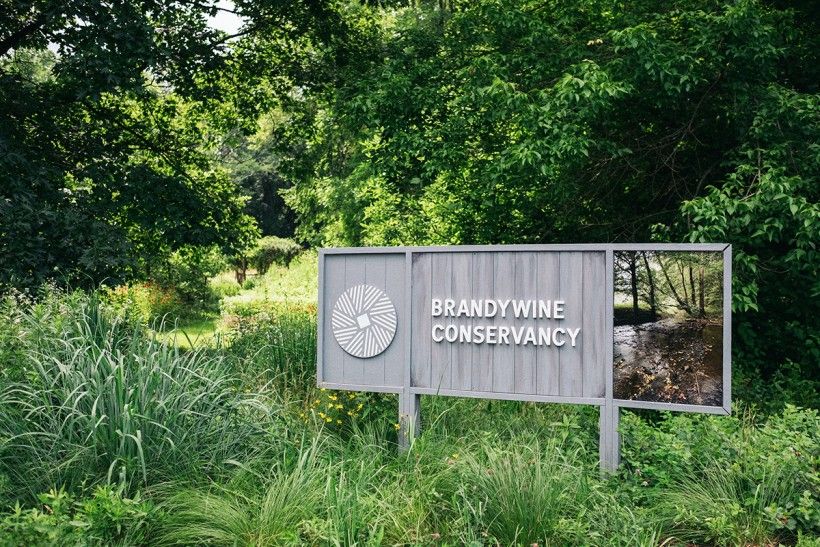
Since its inception over 50 years ago, the Brandywine Conservancy has been centered on protecting and conserving natural resources across the region. Our efforts to be a responsible steward of the environment begin on our main campus in Chadds Ford, PA, by carefully managing and monitoring our buildings and grounds. From conserving energy and water to purchasing green-certified products, operating in a sustainable, environmentally conscious manner is a goal we continually strive for in all aspects of our work.

Protecting water quality and quantity is central to Brandywine’s work. Reducing water consumed within our campus buildings and on our land is a key conservation strategy. Over the years, an efficient and pragmatic system has been developed to minimize water loss. Through increased equipment maintenance, staff training, rigorous analysis and monitoring of water bills for unusual activity, and swiftly repairing leaks, the Brandywine has reduced water consumption by 8% over a span of two years, for a total cost savings of 6.6%.

Where possible, Brandywine purchases and uses green-certified products for day-to-day cleaning needs, including disinfectants and solutions used to clean windows, bathrooms and other surfaces.
Conserving energy has many benefits, including minimizing greenhouse gas emissions and lowering operational costs. All outdoor light posts on Brandywine’s Chadds Ford campus are LEDs, downlit, and use digital astronomical timers. Solar-powered lights are used along several walking paths, saving on electrical usage and reducinglight pollution.

Installation of digital thermostats and managing temperature settings, sealing and caulking windows and skylights, adding insulation, and repairing building envelopes have also all reduced energy usage. Energy bills are continuously tracked, and equipment is regularly inspected to identify any issues early and address them promptly. Furthermore, all the electricity consumed by the Brandywine River Museum of Art is provided by wind power—a renewable and cost-effective resource. While natural gas usage increased 2.4% over the past two years, electricity has been reduced by 7%, oil by 33.8%, and overall energy-related costs were reduced by 16.7% over the same period of time.

Since 1974, native plants have also been a key component to the Brandywine’s efforts to address rainwater management and contribute to the overall health of our local ecosystem. Native plants are highly adapted to local growing conditions and require less water and no fertilizer. They also directly benefit our local birds, bees and butterflies; strengthen our local ecology; and help preserve the character of our regional landscape. The Brandywine has four rain gardens on its campus filled with native plants that contribute to the preservation of clean water by slowing rainwater runoff and allowing it to seep slowly into the soil, which reduces flooding and lessens the amount of water rushing into the Brandywine River. During rain events, stormwater flows from the nearby paved areas into the rain gardens where the native plants help capture and break down the pollutants so that cleaner water soaks into the ground.
Let Us Help Your Municipality Become More Sustainable
What strategies have helped your municipality embrace sustainability, conserve water and energy, or improve indoor air quality? We’d love to hear your ideas and creative solutions! If sustainability and climate resiliency are important to your municipality, the Brandywine Conservancy’s staff is here to provide you with technical assistance to help continue advancing your efforts.
Interested in conducting a Sustainable Community Assessment to identify opportunities in your Code of Ordinances? Want to see how tracking energy use and emissions with a greenhouse gas inventory of municipal buildings can reduce costs and save energy? Contact the Brandywine’s Grant DeCosta at [email protected] for more information.
Poison Ivy vs. Look-alike Species
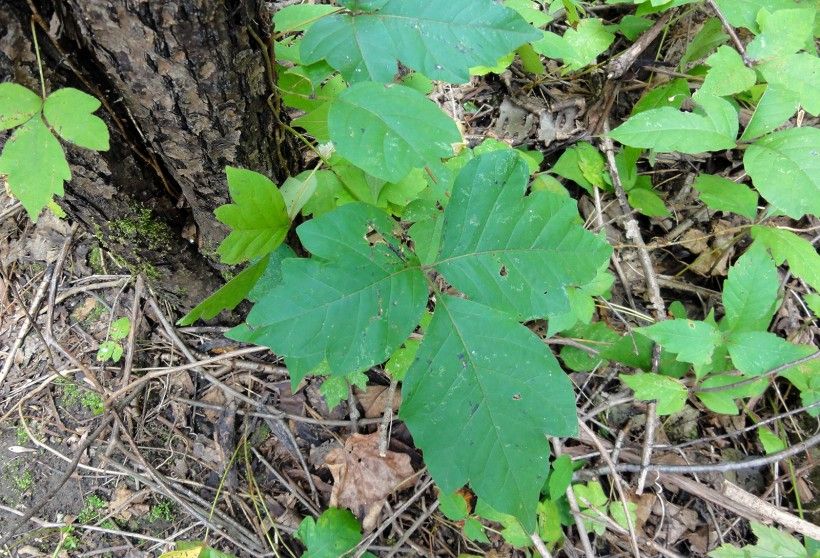
Chances are most nature goers will experience the dreaded poison ivy rash at least once in their lifetime. Poison ivy (Toxicodendron radicans) is a native plant that is valued by wildlife—humans are one of the few species vulnerable to its “poison.” The easiest way to avoid the painfully itchy reaction is to steer clear of the plant. Learn about a few common look-alikes that are often confused for poison ivy or download a handy field guide to take with you during your next nature walk.
Click here to read more.
Delaware’s Invasive Plants Ban: A Boost for Our Native Plants and Wildlife
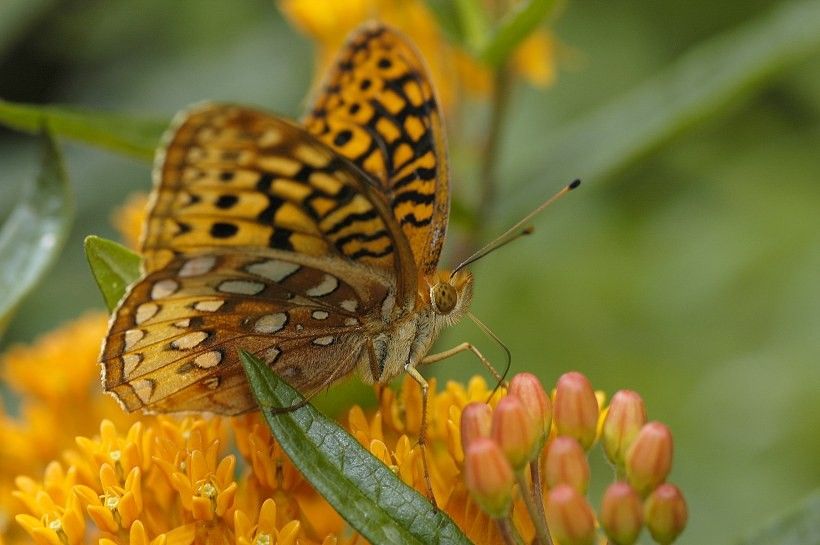
Delaware, the First State, is leading the way once again, enacting a huge win for conservation. Governor John Carney signed Senate Bill 22, banning the sale and trade of invasive plant species in the state, on March 17, 2021. The new law goes into effect in July 2022.
An invasive plant is a non-native species that causes environmental harm by widespread dispersal and displacement of native plants in natural areas.
For now, the list of banned species includes 37 invasive plants, but that list could grow. The Secretary of the Department of Agriculture ultimately chose the species on the list with advice from the Delaware Native Species Commission. The Secretary has the power to add species to the list of banned species. The Commission produces a list of non-native plants of Delaware bi-annually. In January of 2021, its list included 75 invasive species and 72 species on the invasive species watchlist.
Not all non-native species are considered invasive, so you’ll still be able to buy your favorite tulips and daffodils without running afoul of the new law. A non-native plant is one that did not originally grow in North America. They have been introduced over the years (even centuries) through agricultural or horticultural practices.
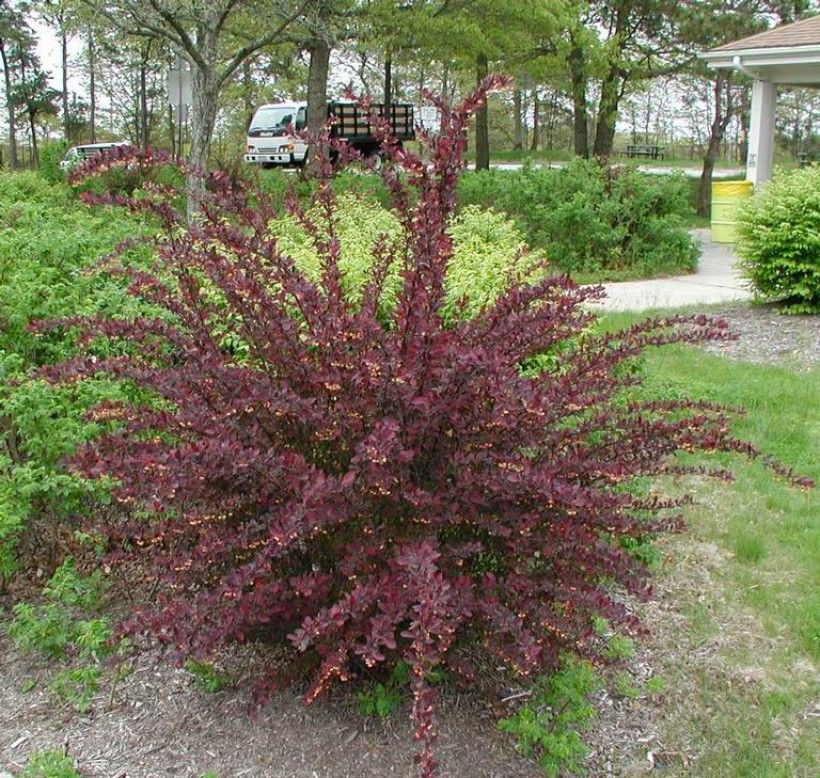
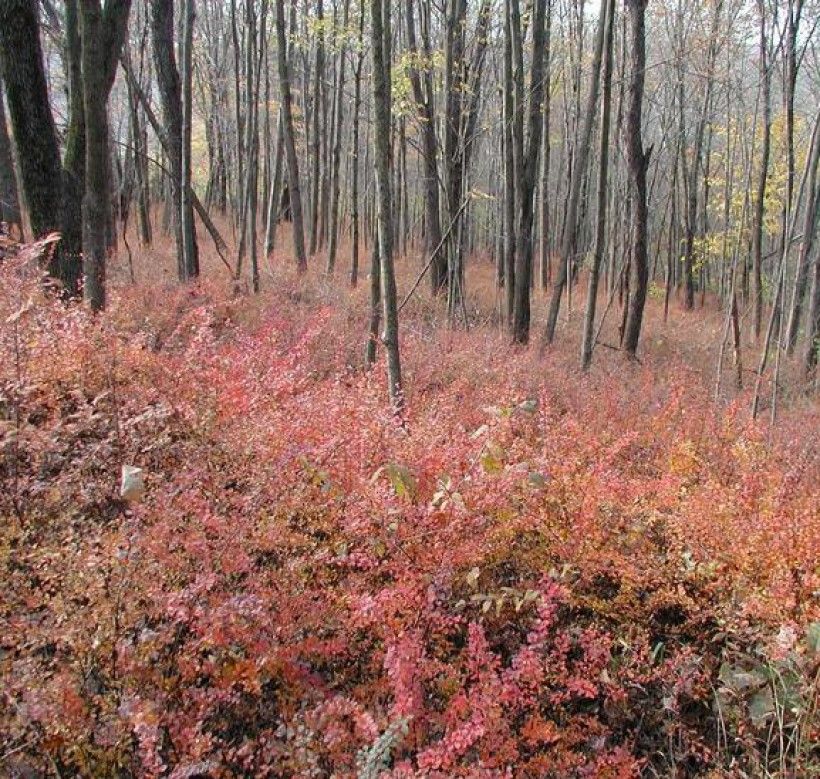
Invasive species, however, are non-native species that impact our local ecosystems in many ways. They out-compete and displace native species, which results in a decline in diversity and abundance of native plants as well as the wildlife that depend on them. They do this by reproducing faster, earlier or more profusely than native plants, by changing soil or light conditions, or by producing chemicals that suppress competition.
When it comes to ecosystem health, not all plants are considered equal. Non-native and invasive species do not provide essential food sources for our local wildlife, including butterflies, bees, birds, and all the insects our birds rely on. A landscape filled with invasive plants is a food desert for our local fauna. It’s especially detrimental to songbirds, which feed caterpillars, insects and spiders to their young during nesting season. A 2018 Smithsonian study conducted in partnership with University of Delaware entomology professor Doug Tallamy found that suburban yards with non-native plant species had significantly lower populations of one of our region’s most common songbirds, the Carolina Chickadee.
The impact of invasive species does not stop at the ecosystem. A study was recently published that documents the high economic costs of biological invasions worldwide. Using a newly developed tool, InvaCost, researchers found that the annual mean cost of biological invasions was $26.8 billion dollars between 1970 and 2017. These costs are likely underestimated—and do not show any sign of slowing down. The economic costs of invasive species include damage and loss to infrastructure, human health and crop production as well as expenses for management and prevention.
The ban on the commercial sale of invasive plants is an important step towards encouraging nurseries, garden centers and homeowners to make plant choices that not only look great but are also terrific environmental team players. With greater access to native plants more people will be able to not only reject invasive plants, but also embrace native plants in their home landscapes.
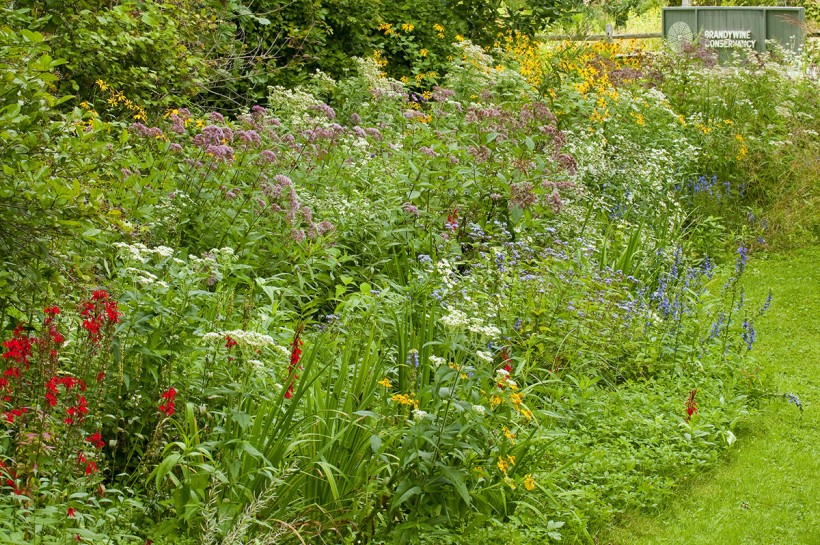
Since 1974, the Brandywine has promoted the role of native plants as the basis of health in our local ecosystem. Brandywine’s Wildflower & Native Plant Gardens were originally designed by horticulturalist FM Mooberry 47 years ago and have been expanded many times over since then. The Brandywine’s campus gardens demonstrate how native plant gardening can be both ecologically exceptional and beautiful. Many of the plants in the gardens are available at Brandywine’s Wildflower, Native Plant & Seed Sale held each year over Mother’s Day weekend. Other local organizations such as Mt. Cuba Center and the Delaware Nature Society also emphasize the importance of native plants.
So the next time you are shopping for something new for your garden, choose a native plant. It will add beauty and diversity to your environment and add an important link in the local food web. The birds and the bees will thank you!
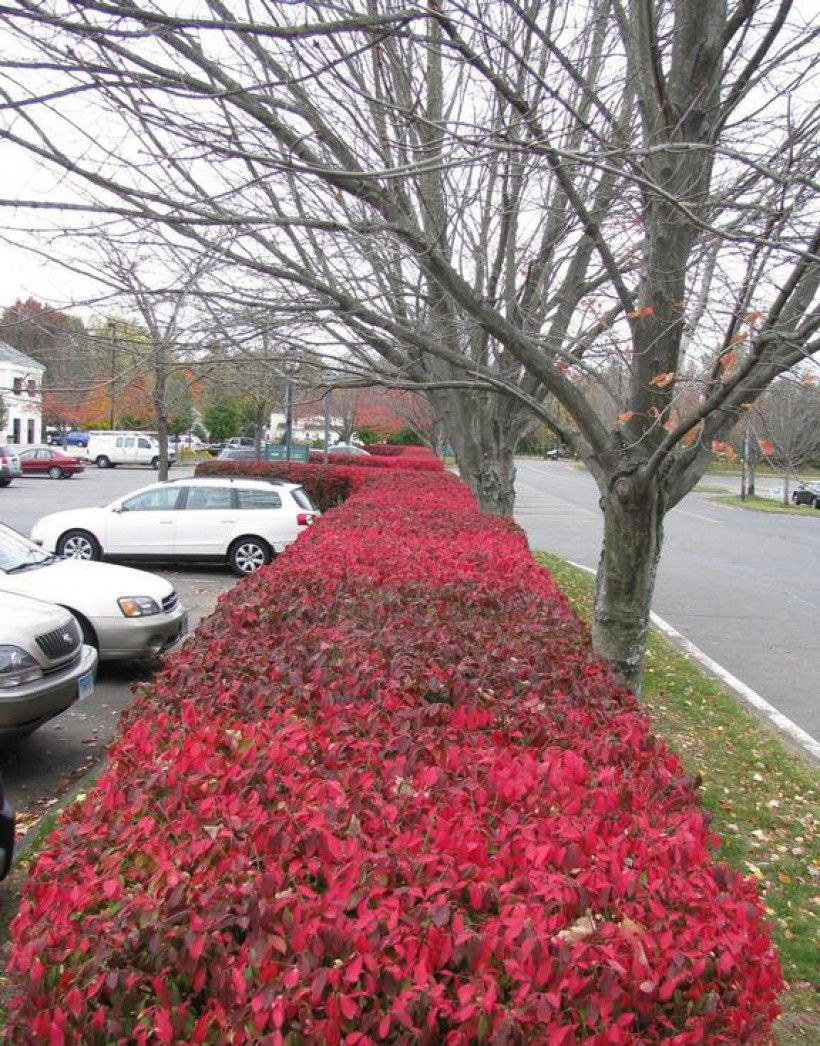
Plants on Delaware’s Banned List that are Common in Gardens and Landscaping
- Japanese Honeysuckle (Lonicera japonica)
- Autumn olive (Elaeagnus mbellata)
- Norway maple (Acer platanoides)
- Clematis (Clematis terniflora)
- European Privet (Ligustrum vulgare)
- Japanese barberry (Berberis thunbergia)
- Lesser periwinkle/Vinca (Vinca minor)
- Winged euonymus/burning bush (Euonymus alatus)
- Callery pear/Bradford pear (Pyrus calleryana)
- English ivy (Hedrix helix)
- Orange daylily (Hemerocallis fulva)
- Japanese pachysandra (Pachysandra terminalis)
- Chinese wisteria (Wisteria sinensis)
Other invasive species common in landscaping:
- Bamboo (Poaceae)
- Princess Tree (Paulownia)
- Butterfly Bush (Buddleja davidii)
List of Banned Invasives in DE:
| Multiflora rose (Rosa multiflora) | Japanese honeysuckle (Lonicera japonica) | Oriental bittersweet (Celastrus orbiculatus) | Japanese stilt grass (Microstegium vimineum) |
| Japanese knotweed (Fallopia japonica) | Autumn olive (Elaeagnus umbellata) | Norway maple (Acer platanoides) | European reed (Phragmites australis subsp. australis) |
| Hydrilla (Hydrilla verticillata) | Morrow’s honeysuckle (Lonicera morrowii) | Mile-a-minute weed (Persicaria perfoliata) | Yam-leaved Clematis (Clematis terniflora) |
| European Privet (Ligustrum vulgare) | European Sweetflag (Acorus calamus) | Wineberry (Rubus phoenicolasius) | Japanese barberry (Berberis thunbergii) |
| Lesser periwinkle (Vinca minor) | Garlic mustard (Alliaria petiolata) | Winged euonymus (Euonymus alatus) | Porcelain berry (Ampelopsis glandulosa) |
| Callery pear (Pyrus calleryana) | Marsh Dewflower (Murdannia keisak) | Lesser celandine (Ficaria verna) | Purple loosestrife (Lythrum salicaria) |
| Amur honeysuckle (Lonicera maackii) | Tartarian honeysuckle (Lonicera tatarica) | Tree of heaven (Ailanthus altissima) | Spotted knapweed (Centaurea stoebe subsp. micranthos) |
| Creeping water primrose (Ludwigia peploides subsp. glabrescens) | Water hyacinth (Eichhornia crassipes) | Parrot-feather (Myriophyllum aquaticum) | English ivy (Hedrix helix) |
| Orange daylily (Hemerocallis fulva) | Yellow flag iris (Iris pseudoacorus) | Creeping Jenny (Lysimachia nummularia) | Japanese pachysandra (Pachysandra terminalis) |
| Chinese wisteria (Wisteria sinensis) |
New Faces of the Conservancy
Some new faces have joined our team! Meet two of the Brandywine’s newest staff members, Elizabeth Davis-Cerami and Emily Tinalli, as well as three new interns who will be working at our Preserves this summer.
Staff Members:

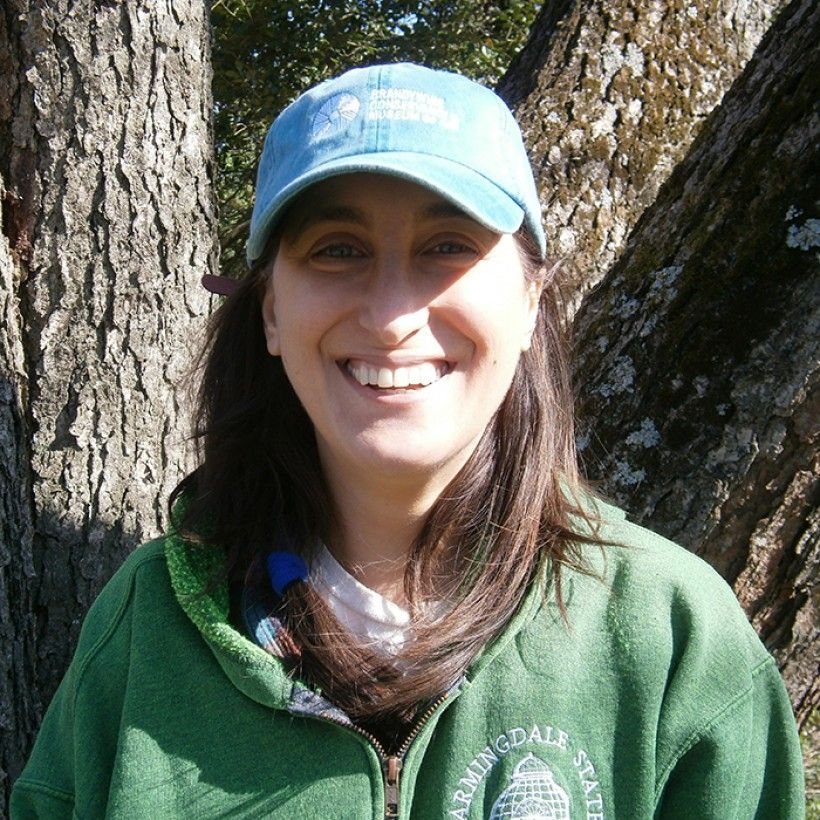
Elizabeth Davis-Cerami joined the Brandywine Conservancy’s staff as its new budget manager. After nearly 20 years with the consulting arm of Deloitte, Elizabeth left her position as Global Controller to open and operate a high-end furniture design firm in Philadelphia; then an eatery and catering company in nearby Kennett Square. Elizabeth holds a B.S. in Accounting from Marymount College. She is a wife and proud mom to her two sons. In her spare time, Elizabeth likes to travel, play tennis, garden, bake and read biographies.
Emily Tinalli joined the Brandywine’s facilities team as its new horticulturist. Prior to joining the Brandywine, Emily worked at Mt Cuba Center for the past seven and half years. Among her different roles there, she most recently held the title of Horticulturist of the Middle Naturalistic Garden since 2017. Emily has a degree in business management from SUNY New Paltz and another in horticulture technology management from Farmingdale State College. She is an experienced, professional horticulturist with keen interest in every aspect of our native plant program.
Summer Interns:
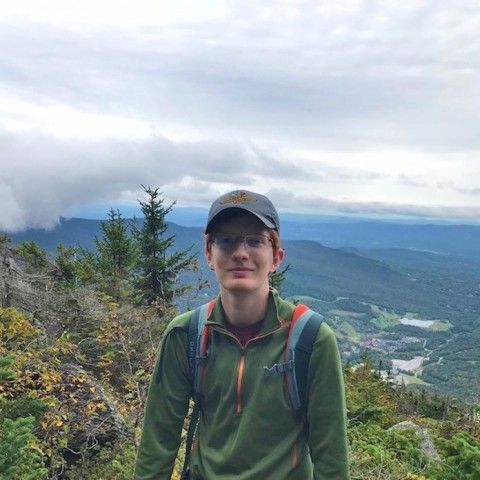

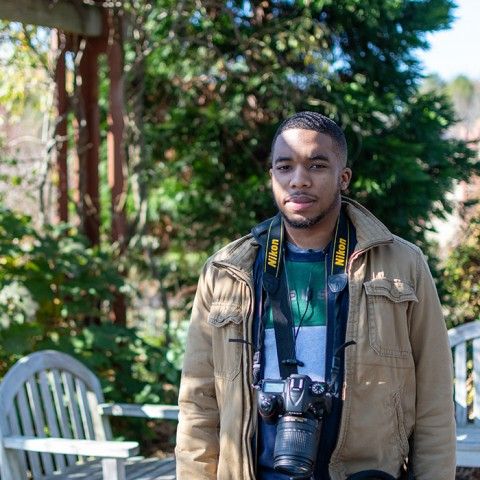
Kerry Blecher is a rising senior dual majoring in Natural Resources Planning and Parks, Recreation and Tourism in the Rubenstein School of the Environment and Natural Resources at the University of Vermont. In his free time, Kerry can often be found skiing or hiking in the mountains. Kerry grew up in Kennett Square, PA. and he spend many weekends in Vermont. Throughout high school, Kerry was an active member of Troop 22 spending many weekends in the Laurels Preserve.
Reilly Green is a senior at Delaware Valley University. She is studying agricultural business and is the captain of DVU’s volleyball team. She plans on graduating in May of 2022. Reilly enjoys spending time working on her truck and on the farm and looks forward to interning with the Brandywine this summer.
Christopher Radford-Wilson is graduating from The Pennsylvania State University in Fall 2021 with a major in Agricultural Sciences and a minor in Forest Ecosystems. Christopher’s favorite thing he has learned is how to identify the many native and invasive Pennsylvania plants by their bark, buds and leaves. He also enjoys street photography and has recently gotten into nature photography—more specifically, macrophotography of wildflowers.
Pennsylvania Pollinator Photo Challenge
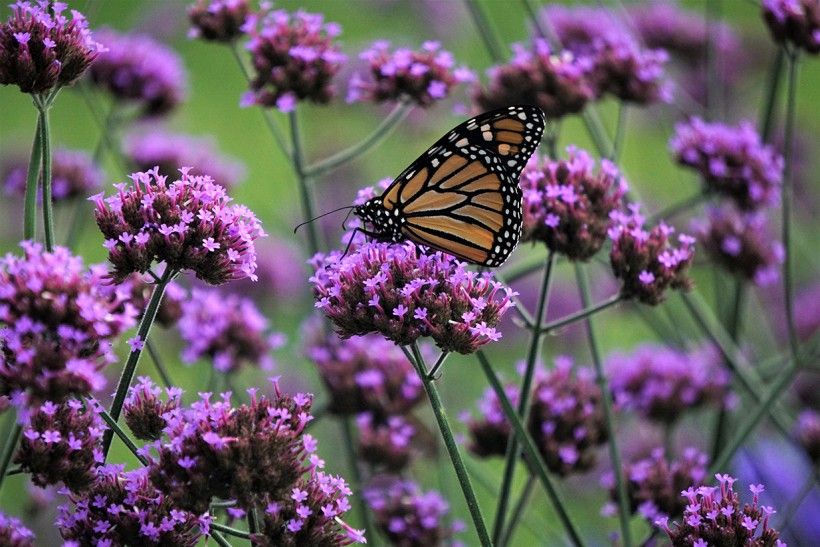
Calling all shutterbugs: We want to see your best bug and pollinator photos. Together with the Westmoreland Pollinator Partners, the Brandywine’s Penguin Court Preserve is hosting a photo challenge featuring Pennsylvania pollinators!
The Westmoreland Pollinator Partnership (WPP), of which Penguin Court is a member, formed in 2019 as a result of conservation, educational and community groups coming together to protect and promote our local pollinators. Before the pandemic put the brakes on programming, WPP has offered programs that highlight public gardens, given away native plants, led children’s activities and more. This year, for a more socially distant activity, WPP and Penguin Court are hosting a photo challenge to feature our beloved pollinators and focus attention on these little—and some not so little—creatures that are vital to life as we know it.
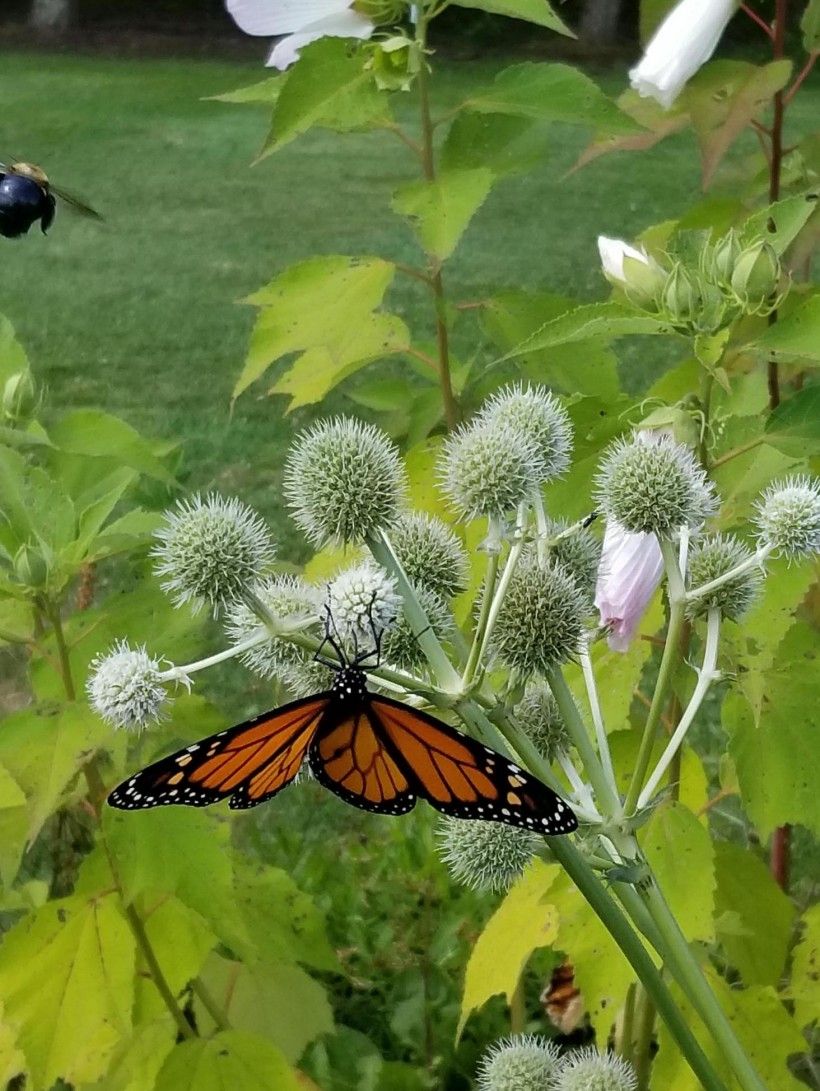
Submitted images must include a pollinator photographed in Pennsylvania, such as bees, beetles, butterflies, flies, hummingbirds, moths or wasps. Photos of people hand-pollinating plants will be considered, too. Rather than a contest, we’re calling this a photo challenge, because capturing buzzing, darting and flying pollinators isn’t easy!
A person may submit a maximum of three entries that must be submitted electronically by August 13, 2021. Entries will be judged by representatives of the Southern Alleghenies Museum of Art and the Westmoreland Photographers Society. The challenge is open to the public and is not limited to residents of Westmoreland County, PA. Photo categories are available for both adults (18 years and over) and youth (17 and younger).
First, second and third place winners in both the adult and youth categories will be announced at the “Monarchs, Milkweed, and More” event on Sunday, August 29, 2021 at the Southern Alleghenies Museum of Art in Ligonier. Prizes are as follows:
Adults
- 1st Place = $50 Giant Eagle gift card and 9 native plants in 4-inch pots from Penguin Court (Value $50)
- 2nd Place = $30 Giant Eagle gift card and 6 native plants in 4-inch pots from Penguin Court (Value $33)
- 3rd Place = $20 Giant Eagle gift card and 3 native plants in 4-inch pots from Penguin Court (Value $17)
Youth
- 1st Place = Pennsylvania Nature Set: Wildlife, Birds, Trees & Wildflowers, and Pollinators Pocket Guides (Value $32), $30 Dairy Queen gift card and 7 native plants in 4-inch pots from Penguin Court (Value $39)
- 2nd Place = Pennsylvania Nature Set: Wildlife, Birds, Trees & Wildflowers, and Pollinators Pocket Guides (Value $32), $20 Dairy Queen gift card and 3 native plants in 4-inch pots from Penguin Court (Value $17)
- 3rd Place = Pennsylvania Nature Set: Wildlife, Birds, Trees & Wildflowers, and Pollinators Pocket Guides (Value $32) and $10 Dairy Queen gift card
Penguin Court and WPP will make reasonable accommodations to get the prize to the winner, meeting the winner at a mutually agreeable location within Westmoreland County by September 24, 2021. Plants will not be mailed. All entries will be shared on a Flicker page in late August.
Additional rules and regulations, judging criteria, submission information and more may be found at: www.brandywine.org/photo-contest
Bennett’s Run Watershed Conservation Plan
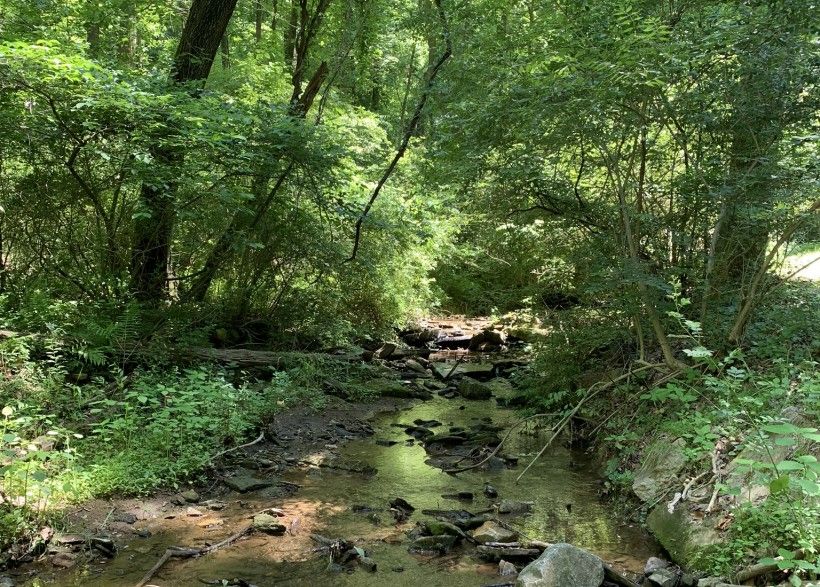
The Brandywine Conservancy is conducting a Watershed Conservation Plan for Bennett’s Run, a tributary for the Brandywine Creek in Pennsbury, Kennett and East Marlborough Townships. The Conservancy invites residents of the watershed to join us on June 10 (rain date on June 15) to learn more and provide your input on the plan, its vision for the watershed, and its draft recommendations.
Public Information Open House
| Date: | June 10, 4-7 p.m. (Rain date: June 15) |
| Location: | Front lawn of the Pennsbury Township Building (702 Baltimore Pike, Chadds Ford, PA 19317) |
There will be no formal presentation, allowing the public to attend at their own convenience during the three-hour event. If you are unable to attend, please visit the project website for more information: https://www.brandywine.org/conservancy/bennetts-run
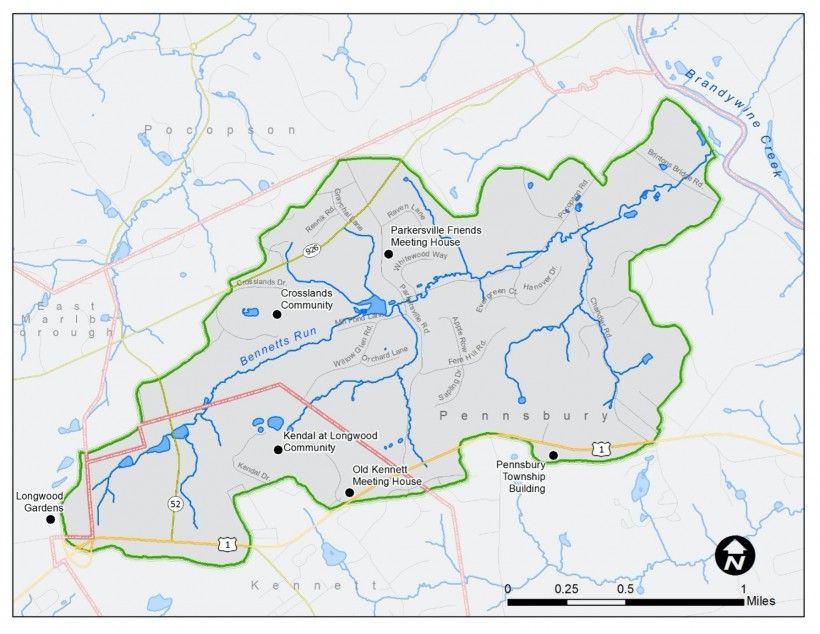
Farming on Conserved Land
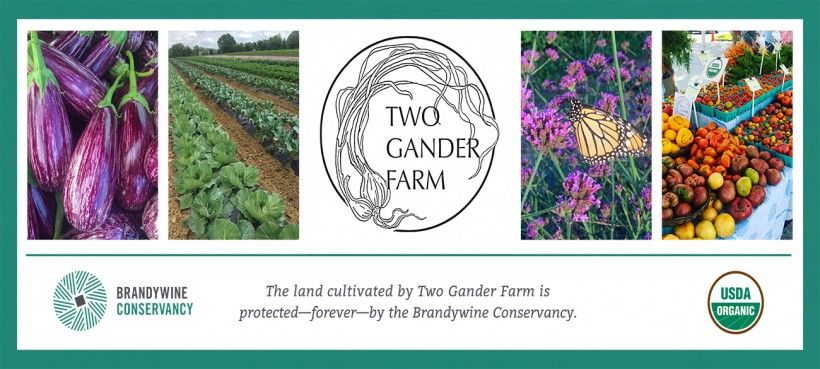
Highlighting its partnership with the Brandywine Conservancy, Two Gander Farm has a beautiful new banner to welcome visitors to their produce stand! Find them at Bryn Mawr Farmers Market on Saturdays from 9 a.m.-1 p.m. Click here for directions and more information.
Family-owned and operated, Two Gander Farm is in its 12th year being run by husband/wife team, Trey and Deirdre Flemming, and its 8th year being operated on a beautiful 260-acre preserve in Downingtown, PA—known as Miller Farm—owned by the Brandywine Conservancy. This collaborative partnership between Two Gander Farm and the Brandywine has cultivated awareness on the importance of farmland preservation and how farmers can work with land trusts in surpassing sustainable agricultural stewardship goals, as well as how land access for farmers relates to community access to fresh local food.
577 acres in Chester County to Soon Become a Public Nature Preserve
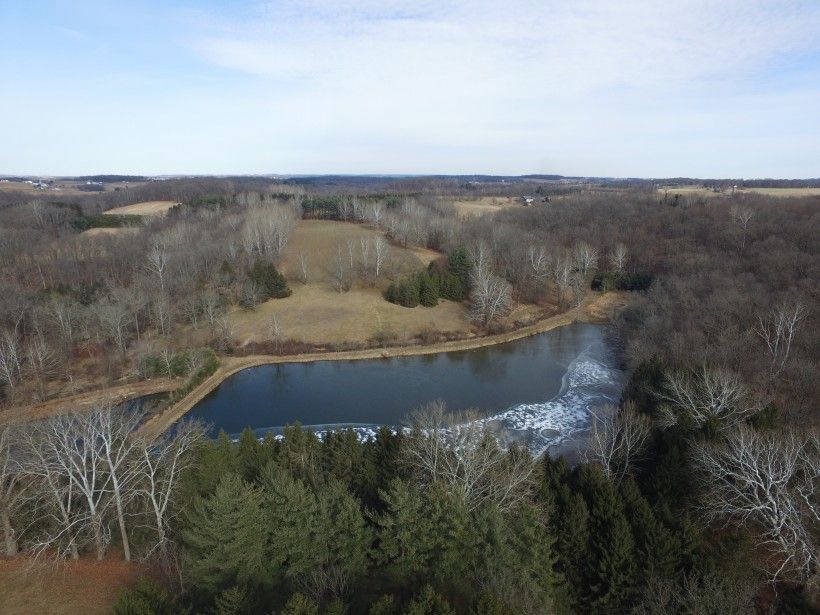
Situated along the Octoraro Creek in Chester County, PA, 577 acres of the recently acquired Glenroy Farm property will soon be opening as a public nature preserve later this summer 2021. In this recent article from LNP / LancasterOnline, get a sneak peek into the property and the process of protecting it for generations to come.
"For the last 50 years, the Thouron family has lovingly managed a 1,000-acre piece of private property in both Lancaster and Chester counties mostly for wildlife and for deer hunting. 'It’s already great because of the stewardship of the family,' said John Goodall of the Brandywine Conservancy, which acquired the property before handing it off to the Oxford Area Foundation. In the heart of the property that will soon be a public preserve, that legacy has left 5 miles of interconnecting strips of grass trails that wind through woods, fields, over knolls, through gurgling streams, across a lake and by wetlands. That includes almost 2½ miles of trail along Octoraro Creek, one of the prettiest waterways in Lancaster County."
Click here to stay tuned for updates about Glenroy and its public opening.
New Conserved Lands Signs
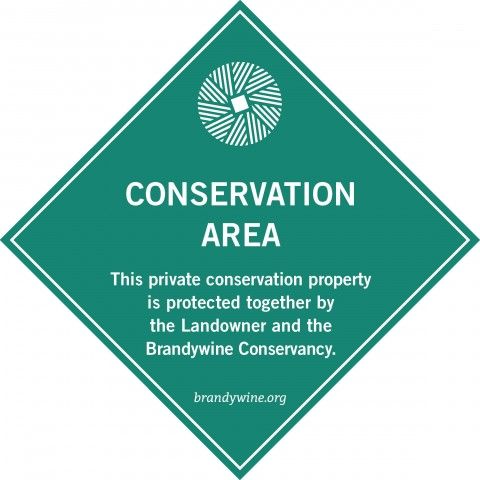
Calling all Easement Landowners! Brandywine has updated our "Conservation Area" signs. If you are interested in distinguishing your property as being part of Brandywine’s larger conservation effort and/or you want to help safeguard your eased land from unforeseen encroachment, we have the signs for you! They are available in large (11.5" x 11.5") and small (7.5" x 7.5"). For more information or to request signs, please contact Kristen Frentzel at [email protected] or 610-388-8391.